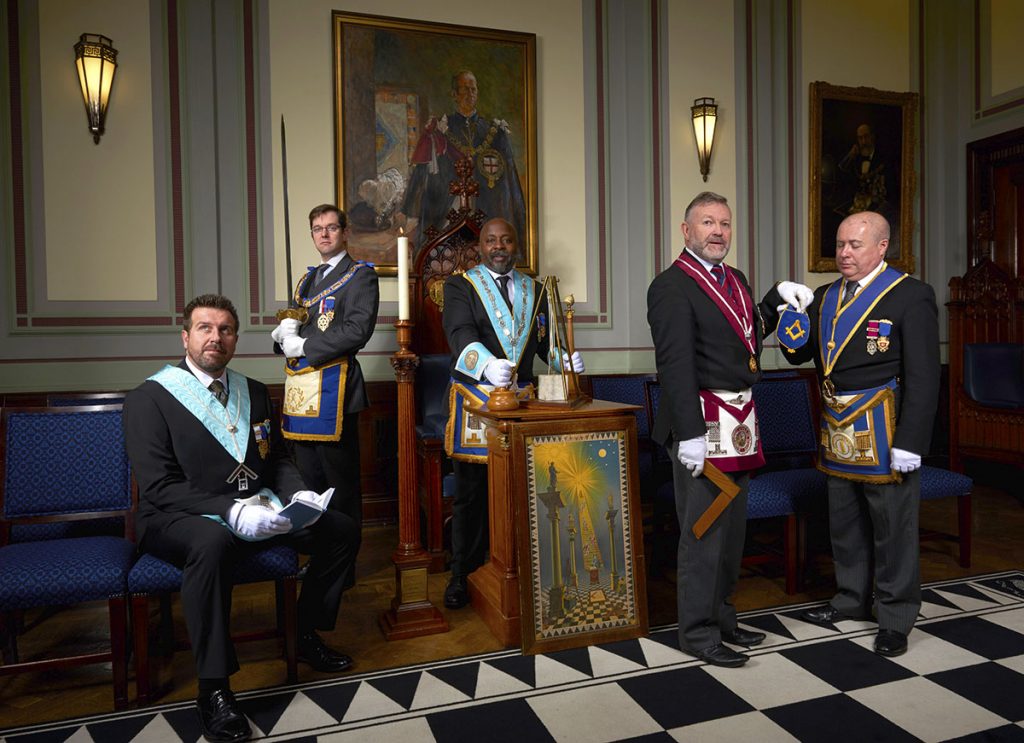The Best Guide to Understanding How to Become a Freemason Quickly
The Best Guide to Understanding How to Become a Freemason Quickly
Blog Article
Exploring the Mysteries of the Freemason: What You Need to Know
The Freemason, a term often shrouded in intrigue and debate, represents a complicated tapestry of historical truth and contemporary misconception. Established in the late 18th century, this secret society was initially rooted in the Enlightenment's ideals but has considering that become identified with conspiracy theory theories concerning elite control. As we browse the beginnings, essential figures, and the raw contrast between myth and truth, one need to take into consideration how these narratives affect modern perceptions of power and secrecy. What could be disclosed via a better exam of these aspects could challenge long-held assumptions concerning the darkness that remain in our society.
Origins of the Freemason
The beginnings of the Freemason are soaked in a blend of historic intrigue and ideological fervor. Developed in 1776 in Ingolstadt, Bavaria, by Adam Weishaupt, the group was originally formed as a secret culture intended at advertising Enlightenment suitables such as factor, secularism, and the separation of church and state. Weishaupt, a teacher of canon law, sought to test the dominating authority of the church and state, which he deemed overbearing organizations suppressing intellectual and personal freedom.
The Freemason looked for to recruit significant participants from different social markets, consisting of politics, academia, and the arts, to cultivate a network devoted to these Knowledge concepts. The society operated under a shroud of privacy, using coded language and routines to safeguard its members from mistreatment, particularly given the repressive environment of the time. The Freemason encountered significant opposition from both governmental authorities and religious institutions, which checked out the team as a risk to their power.
Trick Figures and Participants
Who were the pivotal figures that shaped the Freemason's very early impact and direction? The Bavarian Freemason, founded in 1776 by Adam Weishaupt, emerged as a response to the overbearing social structures of the time.
One more significant figure was Johann Gottlieb Fichte, a noticeable thinker whose concepts on nationalism and education and learning resonated with the Freemason's goals. Although Fichte was not a formal participant, his philosophical foundations influenced the team's belief. Furthermore, figures like the writer and theorist Johann Wolfgang von Goethe were connected with the broader intellectual activities of the time, although their straight involvement with the Freemason continues to be disputed.
These essential numbers added to the Freemason's early instructions, pressing the borders of political and social thought, while their collective initiatives aimed to test well-known norms and foster an environment of modern change in Europe.
Misconceptions vs. Reality
Many misunderstandings surround the Freemason, often blending reality with fiction in a method that covers its true nature. This secret society, initially established in 1776 in Bavaria, aimed to advertise Enlightenment suitables and fight religious and political fascism. The concept that the Freemason continues to put in significant influence over navigate here globe occasions is a myth. While the group did exist, it was disbanded in the late 18th century and has not run as a natural entity ever since.
One more common myth is that the Freemason comprises a network of elite individuals adjusting worldwide events. Actually, several conspiracy concepts overemphasize the team's significance, associating unproven objectives to social trends and events. This has caused an oversimplified sight of intricate concerns.

Modern Interpretations
Contemporary interpretations of the Freemason commonly mirror broader societal stress and anxieties and an attraction with privacy and power. This modern-day lens regularly links the Freemason with conspiracy theory concepts that recommend a hidden elite orchestrates world events, manipulating governments and economic situations for their own gain. Such stories touch right into a deep-rooted distrust of authority, particularly in times of crisis or social upheaval.

Moreover, some modern interpretations frame the Freemason as a metaphor for the complexities of globalization and the interconnectedness of influential people and companies. This point of view motivates an important exam of just how power characteristics operate in today's use this link world, highlighting the equilibrium in between transparency and secrecy in administration and company methods.
Cultural Impact and Heritage
Influenced by centuries of intrigue, the social effect and legacy of the Freemason expand far past its historical origins. This secret society, developed in the late 18th century, has permeated numerous elements of prominent culture, from literature and movie to music and art. The principle of the Freemason has actually developed right into a sign of conspiracy concepts, usually standing for a perceived hidden power adjusting worldwide occasions.
In literary works, authors like Dan Brown have actually woven the Freemason into intricate stories, fascinating readers with motifs of privacy and power. Movies such as "National Treasure" and "The Da Vinci great site Code" better continue the allure of the culture, blending truth with fiction to produce engaging stories.
The Freemason's influence additionally prolongs right into music, with artists referencing the company to evoke motifs of rebellion and social critique. This representation has actually added to a fascination with the concept of clandestine teams managing the bars of power, reflecting social anxieties concerning authority and openness.
Eventually, the Freemason's legacy is an intricate tapestry of myth and truth, forming understandings of privacy and control in contemporary discussion. Its enduring visibility in culture highlights humankind's seasonal pursuit for recognizing hidden truths.
Conclusion
The exploration of the Freemason exposes a complex interplay between historic realities and modern myth-making. Established in the Knowledge era, this culture intended to test overbearing structures, yet its legacy has been outweighed by conspiracy theory theories that suggest elite adjustment. Comprehending the differences in between the initial ideals and contemporary interpretations is essential for comprehending the withstanding attraction with the Freemason and its considerable impact on social stories surrounding power and secrecy in society.
Report this page